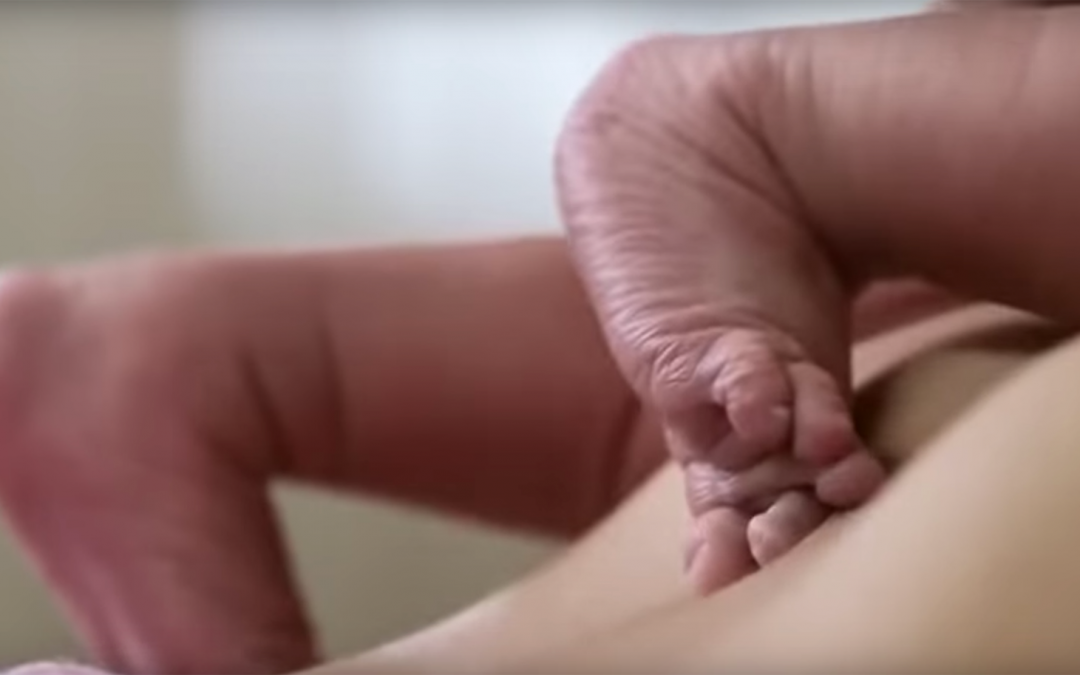If you are getting ready to greet your new family member and you plan to breastfeed/chestfeed them, you’ll probably are aware of the importance of a proper latch. A good latch will let the baby to transfer all the available milk and your nipples will stay sound. Breastfeeding is nature’s way to feed the baby, so the baby is already getting ready for it while still in a womb: sucking on their thumb and swallowing the fluids around themself, thus already coordinating suck and swallow. Outside the womb there will be two undiscovered things to do: to breathe independently using the lungs, so there will be a need to coordinate suck-swallow-breath functions, and to latch onto the breast. First cry of the baby means that their lungs initiated their leading role in the breathing and the out-of-the-womb life has just begun.
The same first cry is also a first step in their so called breast crawl – hard-wired algorithm for the successful beginning of the breastfeeding. Baby has nothing to latch onto in the womb, that’s why by performing the whole long road to the breast, finding the areola and the nipple, and latching onto the breast, that little tiny person, less than an hour old newborn, already knows where their milk is located, and how they are supposed to get it. This process was first discovered and described in 1987 by midwife Dr. Ann-Marie Widströmby et al. from Karolinska Institute (Sweden). She noticed that absolutely all newborns, regardless of their nationality or ethnicity, if left undisturbed but supervised while being on a mother’s tummy upon delivery, and having eye contact with the mother – will eventually start a nine steps journey to the breast; the last step being breastfeeding and sleep.
When birth cry stops, your baby will have a short period of relaxation and then will become alert. You will see an ‘awakening phase’ followed by short rest, then an ‘active phase’ with movements of limbs, rooting activity and looking at their mother’s face, some rest again, a ‘crawling phase’ with very unique soliciting sounds calling the mom (make sure you are prepared for that and baby will not fall of the mother’s body after sometimes very sudden and pretty strong kick-offs with their feet, then a short rest again followed by a ‘familiarization phase’ with licking of the areola (do not help the baby to latch on, everything is fine, your baby is getting ready for the big job and just is looking for the best latch possible), and, finally, a ‘suckling phase’ when successful latch and suckling happens, followed by the last step – a ‘sleeping phase’, when both mother and a baby fall to sleep.
This should be ideal first hour or so of your baby’s life. However, quite often the best plans are ruined due to the changed circumstances. Or you know it’s going to be a planned C-section. And it’s not your or baby’s fault – sometimes raw life happens. DO NOT worry. Despite everything you still have a chance to see that beautiful breast crawl – newborns have the whole set of abilities to perform it for the first few weeks of their life. So you can repeat it when you have such a chance: have the skin-to-skin contact with your slightly hungry baby staying in your bed with dimmed lights, make sure they can see your eyes and just encourage them to do that with your gentle voice and light strokes on their back. It’s a great reset of anything happened to both of you during your labour & delivery and early postpartum with all possible decisions and even mistakes that have been done due to many reasons and, usually, wishing the best. Simply remember, that you are the best parents to your little one and everything you do – you do out of the greatest love. And now, when you are finally together, you have your skin-to-skin contact and your big heart to make everything work just the way you want.
If you require urgent help with breastfeeding:
Call or text @ 416-804-9300

